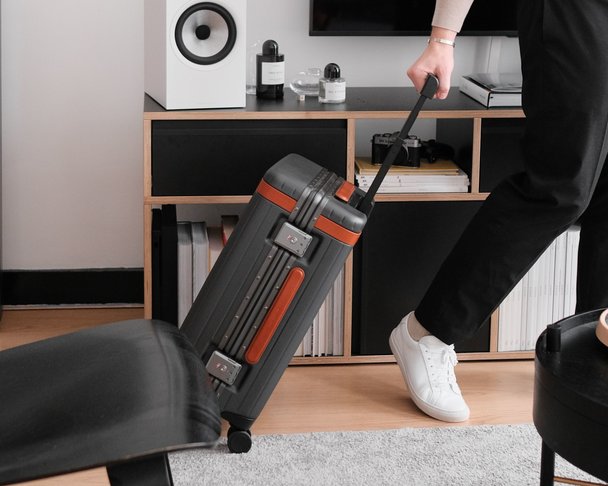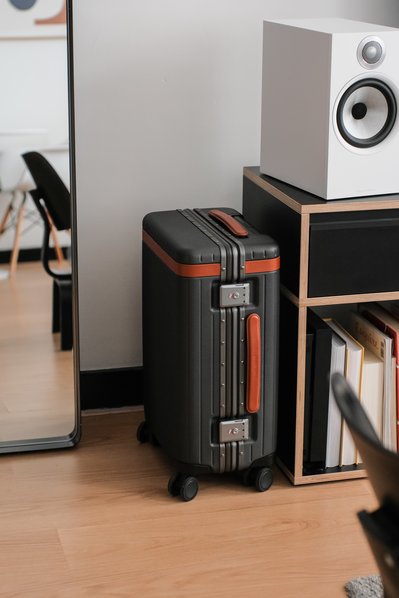A study from Acquaint showed that the average piece of luggage has 80 million bacteria on it after one journey.1
How often you should clean luggage
Published 1 years ago
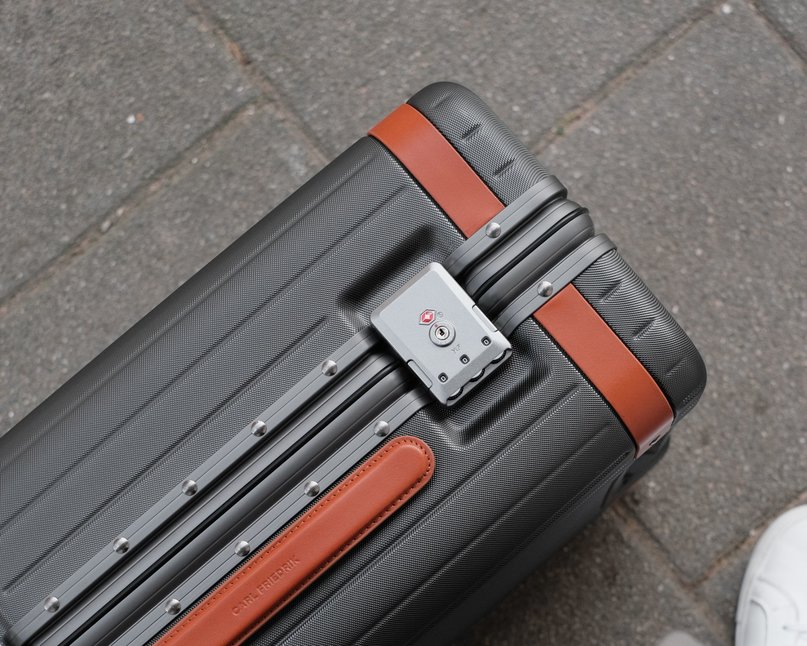
With many holiday goers set to travel further afield this year, we wanted to discover more about their luggage cleaning habits before and after their getaways.
We ran a survey polling over 1,000 travellers to uncover their attitudes toward keeping luggage clean and in the best condition.
Key findings
-
Nearly a fifth (18.7%) have never cleaned their luggage
-
28% said they only clean their luggage if it looks dirty
-
The majority, 38.5%, never considered cleaning their luggage more than usual
-
53.9% are unaware of the number of germs that live on their luggage
-
When told the average piece of luggage has 80 million bacteria, 72.5% said they would clean it more
-
Over a third, 35.3% don’t know which products to use to clean their luggage
Luggage cleaning habits
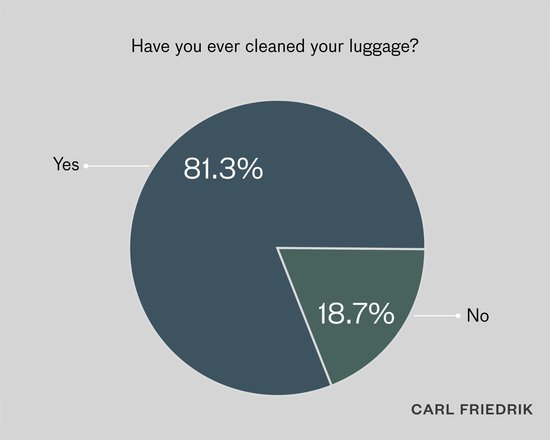
When asked more about the cleaning regime for their suitcases and carry-ons, 28% stated they only clean their luggage if it looks dirty, with 72% of respondents saying they feel they clean their luggage enough.
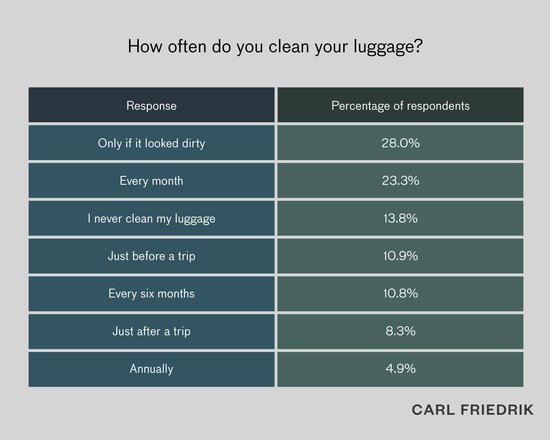
Additionally, when asked why they don’t clean their luggage more frequently, the most common answer, at 38.5%, was that people had never even considered it.
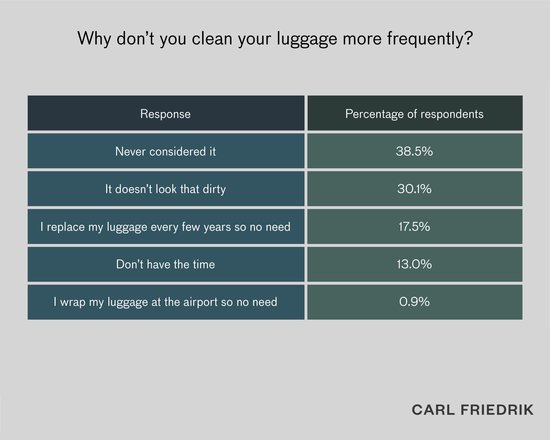
How often to clean luggage
33.4% have cleaned their luggage within the past month, and just over a quarter (29.8%) said they had within the past six months. In third place was within the past year (21.1%). The remaining respondents had not cleaned their luggage in the past two years (9.2%) or even three years (6.5%).
Our advice is to clean your luggage after every trip you take. If, for example, your suitcase hasn’t been used in the past six months, then it’s also worthwhile cleaning the interior and exterior to keep it looking fresh and counteract germs.
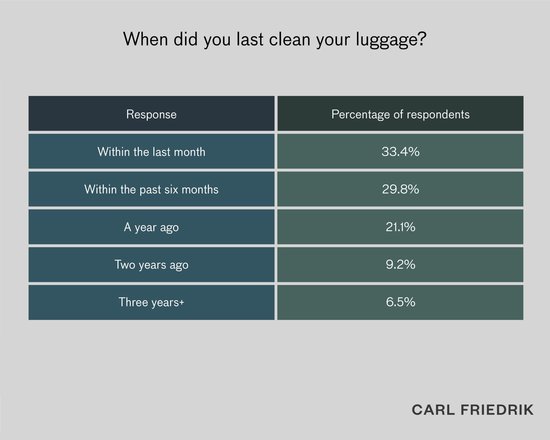
Where to store luggage
The survey results showed the most common place to store luggage was a cupboard in the home (29.4%), followed by a wardrobe (23.4%).
It's beneficial to store luggage that you don't use every day in its dust cover, preferably in a cool closet or away from direct sunlight. Germs thrive in warmer conditions, so avoid storing luggage in places that can overheat. Cold and damp conditions are just as detrimental, due to the possibility of mould or water damage developing.
If possible, steer clear of putting your luggage under the bed as this increases the risk of it collecting bed bugs, dust and debris over time.
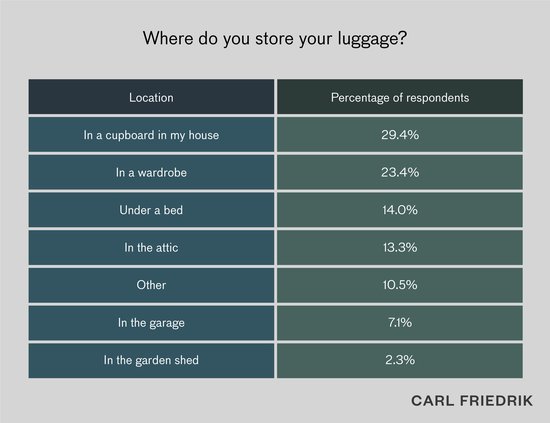
Germs on luggage
Keen to discover how clued up travellers are about keeping their luggage hygienic, the survey asked over 1,000 respondents a series of questions about germs, bugs and their cleaning habits.
Studies show that the average item of luggage comes into contact with an average 80 million bacteria per journey.
When queried, 53.9% of respondents were unaware of the number of germs that could live on their luggage.
To put this into context with other unhygienic places around the home, data from NanoGuardX shows the average toilet bowl contains 3.2 million bacteria per square inch.2 This is followed by toothbrushes, which can contain up to 200,000 bacteria per square inch, that’s around 678 times more than a toilet seat, which is covered in approximately 295 bacteria per square inch.
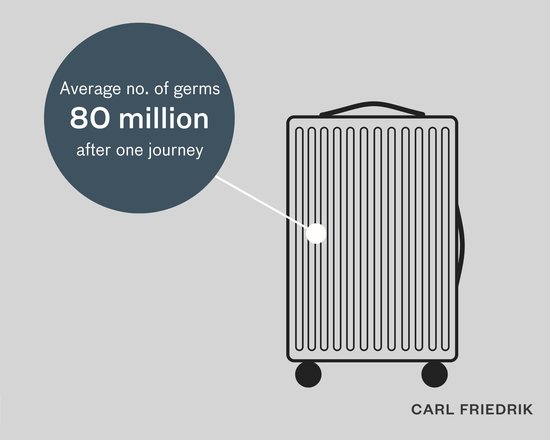
After the survey told respondents that the average piece of luggage houses 80 million bacteria, they were asked if this knowledge would impact their cleaning habits from moving forward. The vast majority (72.5%) noted they would clean their luggage more in the future.
However, 64.5% were unaware which products were best suited to cleaning luggage. With that in mind, we spoke to our in-house team of experts to discuss how to keep your luggage clean without impacting the quality.
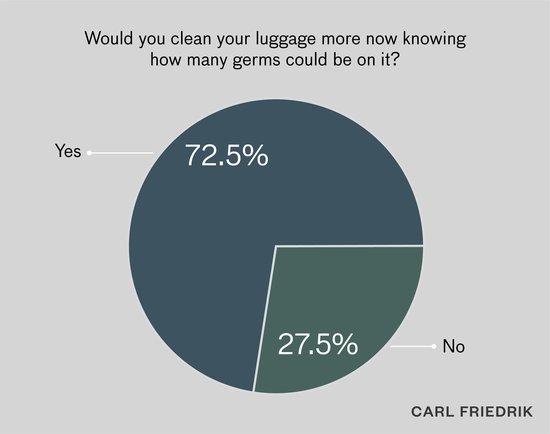
Keeping your luggage clean
Knowing how to safely clean and sanitise your luggage after each trip is crucial.
Our Head Designer here at Carl Friedrik, Chris Reid, provided the below cleaning tips to keep your luggage in the best condition.
Interior
Use a vacuum cleaner with an edge nozzle or a handheld vacuum to remove any dust, dirt, and debris that may have built up, making sure not to forget any pockets inside.
Wipe away minor stains with a damp microfibre cloth. For more stubborn stains, try applying upholstery shampoo and rubbing it into the affected area and wiping down.
Exterior
Wipe down the wheels and handle of your suitcase, and aim to store it on an elevated surface. Whether you have soft or hard luggage, the disinfectant you use is the same. Either hydrogen peroxide or rubbing alcohol can be used to wipe the entire suitcase down, ensuring you thoroughly dry the luggage afterwards to prevent staining.
It’s also worthwhile wiping down handles, hand grips and the wheels of your luggage with disinfecting wipes.
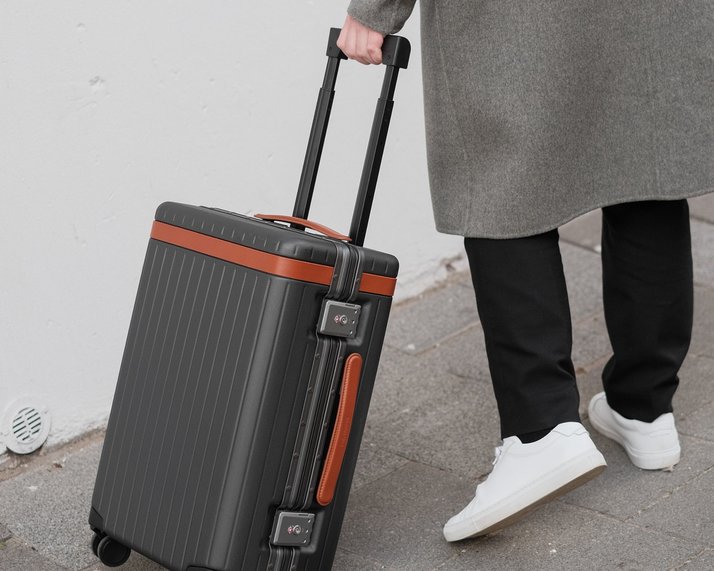
Dispel odours
If your luggage picks up any odours on your travels simply sprinkle the inside with baking soda inside the luggage and leave for 24-48 hours to help absorb the unwanted smell.
A quick spray with a linen spray or essential oils is also a foolproof way to neutralise odour.
Hard-shell luggage
Hard-shell luggage, like our own premium polycarbonate range, is extremely easy to clean. Simply wipe it with a wet sponge. Just don’t use harsh chemicals or an abrasive scourer, as you might scratch or discolour the surface.
Soft-shell luggage
While soft luggage won’t scratch or crack, it will stain. Spill something on the surface and your suitcase will instantly lose some of its aesthetic appeal. What’s more, mud, dust and food stains can be hard to clean from fabric. Treating your soft luggage with a light cream specific to the material of your bag will help nourish it and provide an extra level of protection.
Before heading on a trip it’s worthwhile conditioning, filling and storing your soft luggage to help it maintain its shape. Treat with a leather cream and then place it into its dust cover until you are ready to use.
Leather luggage
Leather is a natural fibre. As an organic material, it needs care and conditioning to keep it looking its best throughout the years. Applying a leather cream or wax adds a layer of protection to the bag’s finish, repelling superficial scratches and scuffs. Read more about taking care of your leather luggage.
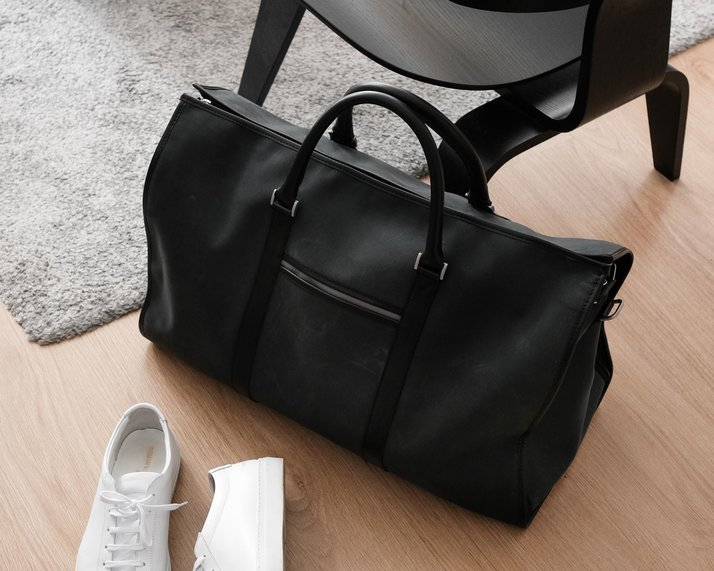
Suede luggage
If suede luggage gets wet, dirty or stained, don’t worry, as you can still avoid permanent damage. Most stains can be removed with a suede brush, suede eraser or cleaner, microfibre towel and a water repellant. Never use a regular brush as they are much more abrasive and can cause damage to suede.
The porous nature of both the shorter and longer fibre varieties is what causes suede to be easily damaged by dirt and moisture, and can easily appear scuffed or marked.
Read more about caring for your suede.
Methodology
The survey was conducted via Amazon’s Mechanical Turk platform collecting responses from 1,043 people from the UK and America, of which 1,038 currently own luggage, from a range of backgrounds between February 22 and 24, 2023.
The demographic breakdown of respondents is as follows.
Gender: female 53.5%, male 45%, non-binary 1.2%, prefer not to disclose 0.4%.
Age: 18-24 6.3%, 25-34 41.1%, 35-44 26.4%, 45-54 14.9%, 55-64 7.9%, 65+ 3.5%.
To establish how often people are cleaning their luggage, the survey conducted on behalf of Carl Friedrik asked a number of questions related to travelling, luggage and cleaning habits.
